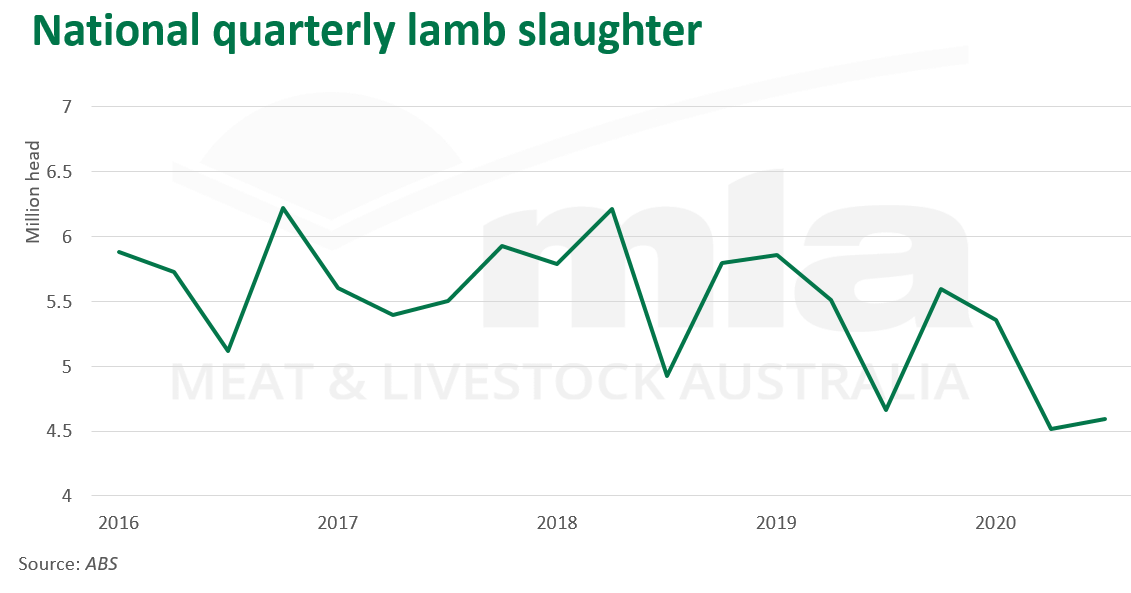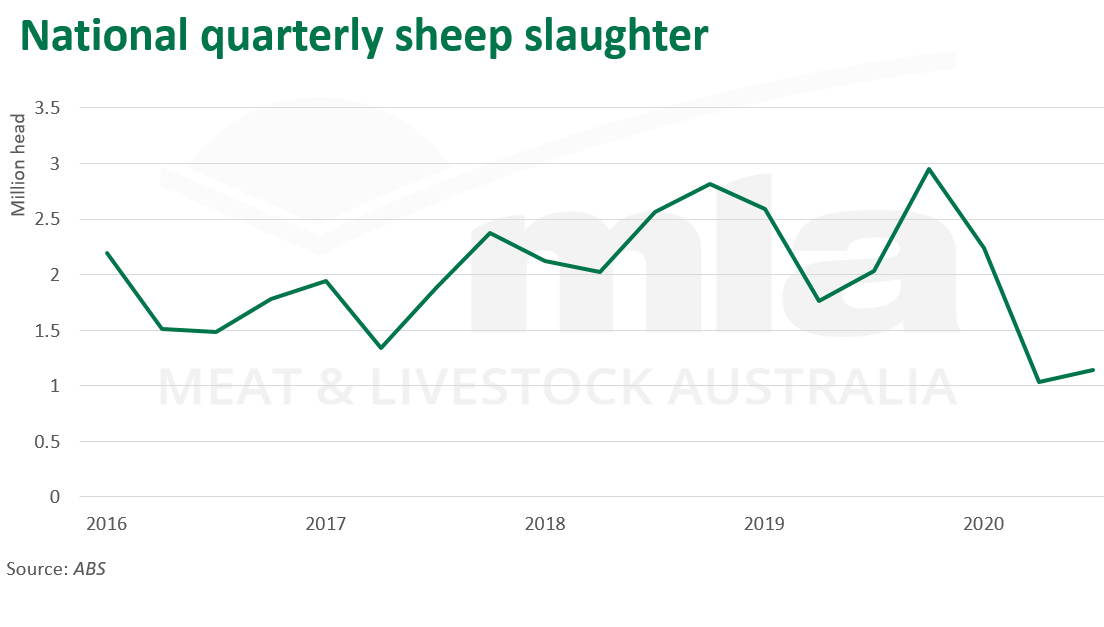Subscribe to The Weekly e-newsletter
For in-depth red meat market news, information and analysis.
National flock rebuild gains momentum
26 November 2020
Key points:
- National lamb slaughter tracking down despite a larger spring lamb crop
- National sheep slaughter continues to move at historically low levels
- Greater feed availability has seen average national lamb and sheep carcase weights lift
Lamb slaughter and production
The latest ABS data for the September quarter reported national lamb slaughter at 4.6 million head, a modest 2% decline on the same quarter last year. For the year-to-September, total lamb slaughter has totaled 14.5 million head, in line with MLA’s September Sheep Projections and with the December quarter still to go.
While reports of increased lamb survival and higher marking rates pointed towards a larger spring crop this year, fewer numbers have moved through the processing chain, evidenced by an 11% decline in lamb slaughter on 2019 levels for year-to-September figures. When compared to lamb slaughter for the same period in 2016, which was also marked by improved conditions in many sheep producing regions, total lamb slaughter for 2020 has tracked down 16%, which highlights the ongoing flock recovery phase. Greater incentives to retain ewe lambs have been driven by both improved conditions and a dampening effect on offshore and domestic demand.
Despite a slight decline in total lamb slaughter, national lamb production for the September quarter saw a 6% increase on the same quarter last year and a marginal 2% lift on this year’s June quarter. This was largely due to an increase in average carcase weights to sit at 24.95kg/head, the heaviest quarterly average on record. Greater feed availability continues to buoy lamb carcase weights, with more lambs entering the market at a higher weight bracket.

Sheep slaughter and production
National sheep slaughter continues to fly at a historically low trajectory, with the September quarter down 44% on the same period last year to total 1.1 million head. For the year-to-September, sheep slaughter has pushed down 31% on the same time last year and sits 21% below the five-year average for the same period. While retention of productive breeding stock has contributed to fewer sheep moving through the yards, it has been the smaller pool of available sheep this year after two years of excessive turn-off that has pressured inventory numbers and pushed down slaughter.
Coinciding with a sharp decline in slaughter, mutton production has also come off the boil, contracting 40% to 30,900 tonnes carcase weight (cwt) over the September quarter. Unlike lambs, the increase in average sheep carcase weights has not been enough to offset the decline in production. Carcase weights lifted 6% on the June quarter to 27kg/head, which has been driven by the same force seen in lambs – greater feed availability.

© Meat & Livestock Australia Limited, 2020


